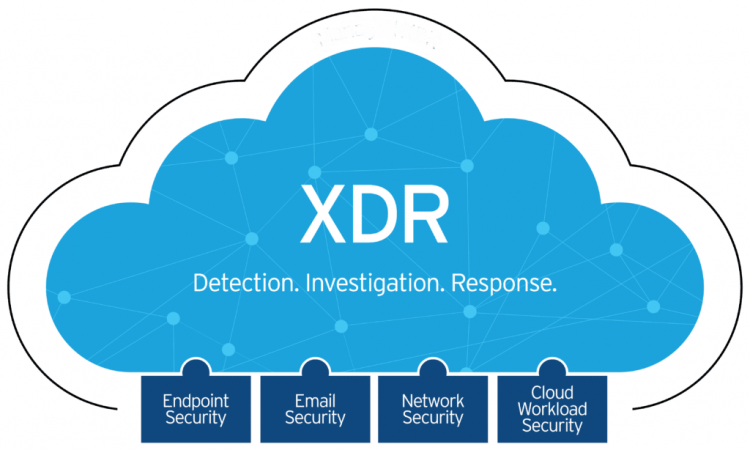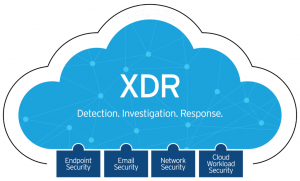What is XDR: Everything You Need to Know About XDR
Updated on March 27, 2023, by OpenEDR

XDR, or Extended detection and response, is a new hazard detection and answer initiative that furnishes holistic protection against cyberattacks, abuse, and unauthorized entry. It is an incredible approach towards security as it automatically connects data across numerous layers- endpoint, server, cloud workload, and network.
What is XDR?

XDR assists unification of the endpoint and workload security capabilities with critical visibility into the network and cloud- reducing blind spots, detecting dangers quickly, and automating remediation via authoritative context across these domains.
Let us further understand more about “what is XDR?”
What is XDR: How does XDR work?
XDR is an ideal approach to threat detection and response. Today we experience plenty of threats across all data, which can be severe. But for all these sophisticated threats, XDR solution provides protection readily. You will notice increasing threats daily, but the XDR platform is here to help you. With the help of this, cybersecurity teams can:
- It tracks threats against any source of location within the organization.
- It enhances the productivity of people operating the technology.
- Identifies the hidden dangers proactively and quickly.
- It concludes the investigations more efficiently.
- Correlating and confirming alerts reduces the need to chase false positives.
- Integrate relevant data for faster and more accurate happening triage.
- User and technology behavior analysis is natively supported.
Cyberattacks can be prevented and security processes can be simplified and strengthened through the use of XDR platforms. This way, companies can readily focus on strategic priorities when data and applications are protected. So, now you understand “what is XDR” and how it functions.
What is XDR: What are the benefits of XDR?
The capabilities of endpoint XDR are above and beyond, providing numerous tangible advantages for securing an organization’s IT environment. These include:
It provides perfect visibility and context.
XDR is more useful in comparison to EDR and third-party security services. XDR helps provide a complete view of the security environment. It allows security analysts to see threats for everything they need to know, from how an attack can occur to the full blueprint. XDR provides a solution for quick response to threats.
Automation
With XDR’s automation, you can detect, respond, and remove the manual steps for the security process. It is one of the ideal ways to handle a large volume of security data and carry out complex functions for IT teams.
Block all attacks with endpoint protection.
With integrated AI-driven antivirus and threat intelligence, XDR helps block malware, exploits, and file-less attacks. It is an ideal approach for IT professionals.
Prioritize the critical alert.
Regularly, IT professionals need help to keep up with multiple alerts generated. With cyber security XDR’s data analysis and correlation capabilities, you can find the essential threats that must be prioritized.
Quick detection and response
Due to the robust and effective security posture, XDR solutions allow for detection and response the threats faster.
Efficiency
Through XDR, threats are seen holistically across the entire environment. It can offer centralized data collection and response tightly integrated into the atmosphere and broader security ecosystem.
What is XDR: What are the inevitable mistakes to avoid?
XDR platform is a powerful security strategy, but you must select a solution that utilizes its capabilities to maximize its effectiveness. When you are choosing a platform, you must look for the mentioned problems:
Absence of integration
It is only effective when the XDR is fully integrated within the IT environment. The difficult integrations take time from your IT groups and make your XDR solution less useful.
Operational intricacy
You need to check how accessible and cohesive the IT teams and security are. If this is not the case, the time your team gains implementing it will be offset by the time and effort spent learning it and setting it up.
Insufficient automation
It is one of the essential capabilities of XDR. It helps the effective platform adapt to current conditions and conduct a targeted response beyond blocking traffic to the affected device.
What is XDR: What is the difference between XDR and EDR?
XDR, in comparison to EDR, is a broader term. EDR provides a single point of view, but XDR enables telemetry and behavioral analysis across multiple security layers, allowing security teams to see the big. EDR generally does not detect a total percentage of attacks, but with the XDR platform, you will not suffer from these issues. EDR is a time-consuming and complex investigation.
In addition to providing visibility into compromised endpoints, EDR also needs to alert security teams when an attack moves across endpoints. Here XDR can be the best solution since it provides a holistic view of activity across the system that avoids visibility gaps.
What is XDR: Final Words?
Have you got all the questions about “What is XDR?”
If yes, trust Open EDR. It has the best solution for what you are looking for. You must consult them for the same openedr.com.
See Also
FAQ Section